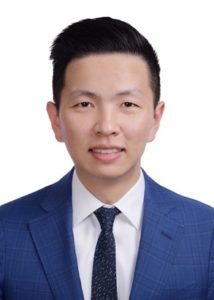 Yuxiong Huang is an Associate Professor of environmental science and technology at Shenzhen International Graduate School, Tsinghua University. Dr. Huang is an interdisciplinary environmental scientist, with expertise in pollution control and environmental fate and transport, exposure and risk assessment. He received a B.S. degree in 2011 from the Department of Chemical Engineering, Tsinghua University; and Ph.D. degree in 2015 from Bren School of Environmental Science and Management, University of California, Santa Barbara. Before joining Tsinghua University, he was an associate specialist at the University of California’s Center for Environmental Implications of Nanotechnology. Dr. Huang currently leads a research group focusing on sustainable nanotechnology, addressing both the applications and implications of engineered nanomaterials.
Yuxiong Huang is an Associate Professor of environmental science and technology at Shenzhen International Graduate School, Tsinghua University. Dr. Huang is an interdisciplinary environmental scientist, with expertise in pollution control and environmental fate and transport, exposure and risk assessment. He received a B.S. degree in 2011 from the Department of Chemical Engineering, Tsinghua University; and Ph.D. degree in 2015 from Bren School of Environmental Science and Management, University of California, Santa Barbara. Before joining Tsinghua University, he was an associate specialist at the University of California’s Center for Environmental Implications of Nanotechnology. Dr. Huang currently leads a research group focusing on sustainable nanotechnology, addressing both the applications and implications of engineered nanomaterials.
Read Yuxiong’s Emerging Investigator Series article “Emerging investigator series: Hetero-phase junction 1T/2H-MoS2 nanosheets decorated by FeOOH nanoparticles for enhanced visible light photo-Fenton degradation of antibiotic” and read more about him in the interview below:
Your recent Emerging Investigator Series paper focuses on Hetero-phase junction 1T/2H-MoS2 nanosheets decorated by FeOOH nanoparticles for enhanced visible light photo-Fenton degradation of antibiotic. How has your research evolved from your first article to this most recent article?
I’ve been working on environmental nanotechnology since 2011. My first article was to develop magnetic nanoparticle adsorbents to effectively remove emerging contaminants, published in 2012. After that, I rationally designed a series of novel magnetic-core composite nanoparticle sorbents for organic and metal contaminants remediation in aquatic systems. Recently, our group worked on photocatalysis-based advanced oxidation processes using solar energy to efficiently degrade the persistent organic pollutant, including per- and polyfluoroalkyl substances (Environ. Sci.: Nano, 2020, 7 (8), 2229–2239, etc.). And the present work, we have constructed a hetero-phase junction with metallic 1T and semiconductive 2H MoS2 for antibiotic contaminant photo-Fenton catalytic degradation. Our research is always driven by the urgent technical demand for the effective control of emerging contaminants, and we always follow a rational design pattern to provide “nano” solutions.
What aspect of your work are you most excited about at the moment?
We have a great team working together on Environmental Nanotechnology at Shenzhen International Graduate School, Tsinghua University. It’s joyful and inspiring to grow up with our next generation of young environmental scientists.
In your opinion, what are the most important questions to be asked/answered in this field of research?
While many different nanomaterials-based solutions have been reported for environmental remediation, most of them stunk at the benchmark scale. How to apply the engineering nanomaterials for wastewater treatment in a pilot or full-scale plant? It’s a critical question to be answered.
What do you find most challenging about your research?
The most challenging part of our research is how to upgrade the batch study into a continuous reaction, for example, the reactor design. We have made some progress on it so far.
In which upcoming conferences or events may our readers meet you?
We will attend the ACS Meeting and Sustainable Nanotechnology Conference.
How do you spend your spare time?
I love hiking and snowboarding.
Which profession would you choose if you were not a scientist?
Probably Chemical Engineer.
Can you share one piece of career-related advice or wisdom with other early career scientists?
Do good time management, particularly a good balance between research, teaching, public service and life.










